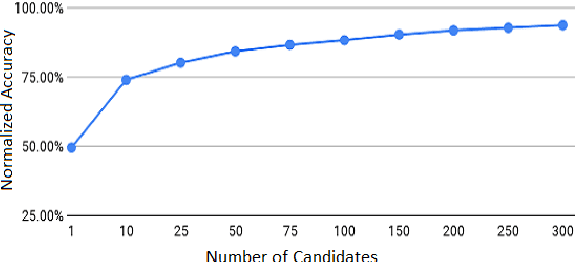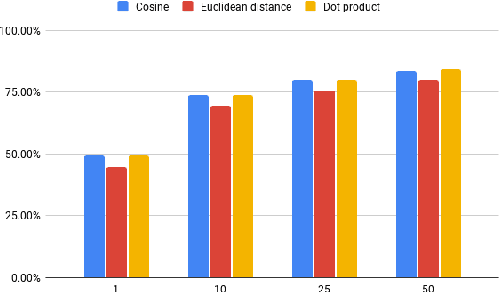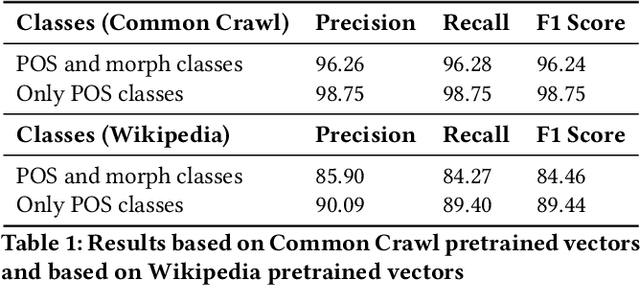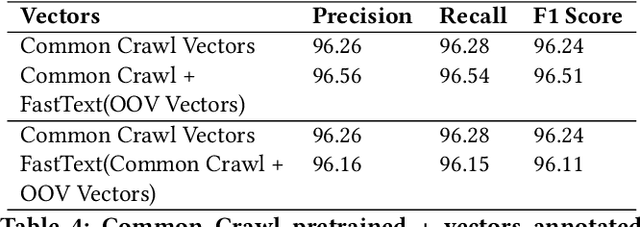Eleni Partalidou
Improving Zero-Shot Entity Retrieval through Effective Dense Representations
Mar 06, 2021



Abstract:Entity Linking (EL) seeks to align entity mentions in text to entries in a knowledge-base and is usually comprised of two phases: candidate generation and candidate ranking. While most methods focus on the latter, it is the candidate generation phase that sets an upper bound to both time and accuracy performance of the overall EL system. This work's contribution is a significant improvement in candidate generation which thus raises the performance threshold for EL, by generating candidates that include the gold entity in the least candidate set (top-K). We propose a simple approach that efficiently embeds mention-entity pairs in dense space through a BERT-based bi-encoder. Specifically, we extend (Wu et al., 2020) by introducing a new pooling function and incorporating entity type side-information. We achieve a new state-of-the-art 84.28% accuracy on top-50 candidates on the Zeshel dataset, compared to the previous 82.06% on the top-64 of (Wu et al., 2020). We report the results from extensive experimentation using our proposed model on both seen and unseen entity datasets. Our results suggest that our method could be a useful complement to existing EL approaches.
Design and implementation of an open source Greek POS Tagger and Entity Recognizer using spaCy
Dec 05, 2019



Abstract:This paper proposes a machine learning approach to part-of-speech tagging and named entity recognition for Greek, focusing on the extraction of morphological features and classification of tokens into a small set of classes for named entities. The architecture model that was used is introduced. The greek version of the spaCy platform was added into the source code, a feature that did not exist before our contribution, and was used for building the models. Additionally, a part of speech tagger was trained that can detect the morphology of the tokens and performs higher than the state-of-the-art results when classifying only the part of speech. For named entity recognition using spaCy, a model that extends the standard ENAMEX type (organization, location, person) was built. Certain experiments that were conducted indicate the need for flexibility in out-of-vocabulary words and there is an effort for resolving this issue. Finally, the evaluation results are discussed.
 Add to Chrome
Add to Chrome Add to Firefox
Add to Firefox Add to Edge
Add to Edge